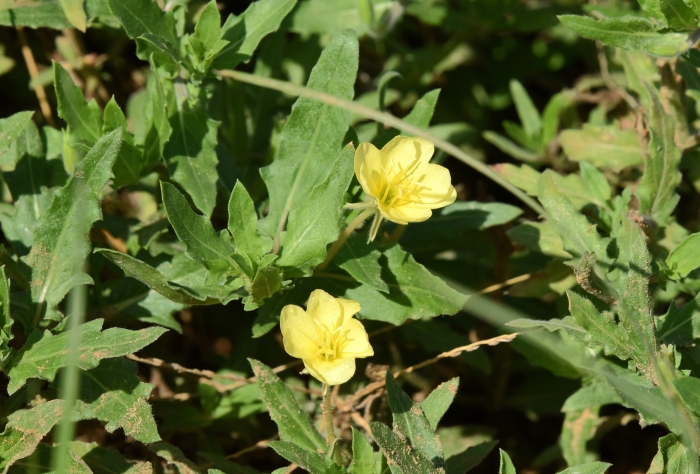Cutleaf Evening Primrose
(Oenothera laciniata)
Cutleaf Evening Primrose (Oenothera laciniata)
/
/

© Zinogre
CC BY-SA 4.0
Image By:
© Zinogre
Recorded By:
Copyright:
CC BY-SA 4.0
Copyright Notice:
Photo by: © Zinogre | License Type: CC BY-SA 4.0 | License URL: http://creativecommons.org/licenses/by-sa/4.0/ | Uploader: zinogre | Publisher: iNaturalist |























Estimated Native Range
Summary
Oenothera laciniata, commonly known as Cutleaf Evening Primrose, is an annual or short-lived perennial herb that is native to open woodlands, grasslands, and roadside areas in the eastern half of the United States. It has naturalized in many regions, including Hawaii, Australia, and parts of Europe and Asia. This species typically grows to a height of 1-3 feet (30-90 cm) with a similar spread, and it features a basal rosette of deeply lobed leaves from which spreading stems emerge. The plant produces distinctive yellow flowers that open in the evening and fade to orange or pink as they mature. The flowering season extends from late spring to early fall, and the flowers are particularly showy at dusk when they open.
Cutleaf Evening Primrose is valued for its attractive, fragrant flowers that can add a splash of color to wildflower gardens, borders, and naturalized areas. It is also appreciated for its ability to attract pollinators such as bees and moths. This plant prefers full sun to part shade and is adaptable to a variety of soil types, though it thrives in well-drained soils. It is drought-tolerant once established and requires minimal maintenance. However, it can self-seed prolifically and may become invasive in some areas, outcompeting native vegetation. Gardeners should be aware of its potential to spread and manage it accordingly.CC BY-SA 4.0
Cutleaf Evening Primrose is valued for its attractive, fragrant flowers that can add a splash of color to wildflower gardens, borders, and naturalized areas. It is also appreciated for its ability to attract pollinators such as bees and moths. This plant prefers full sun to part shade and is adaptable to a variety of soil types, though it thrives in well-drained soils. It is drought-tolerant once established and requires minimal maintenance. However, it can self-seed prolifically and may become invasive in some areas, outcompeting native vegetation. Gardeners should be aware of its potential to spread and manage it accordingly.CC BY-SA 4.0
Plant Description
- Plant Type: Herb
- Height: 1-3 feet
- Width: 1-2 feet
- Growth Rate: Rapid
- Flower Color: Yellow
- Flowering Season: Spring, Summer, Fall
- Leaf Retention: Deciduous
Growth Requirements
- Sun: Full Sun, Part Shade
- Water: Medium
- Drainage: Fast, Medium
Common Uses
Butterfly Garden, Drought Tolerant, Groundcover, Low Maintenance
Natural Habitat
native to open woodlands, grasslands, and roadside areas in the eastern half of the United States
Other Names
Common Names: Southern evening primrose, Cut-Leaved Evening Primrose, Ragged evening primrose
Scientific Names: , Oenothera laciniata, Oenothera biennis, Oenothera laciniata subsp. floridana, Oenothera laciniata subsp. laciniata, Oenothera laciniata subsp. texensis, Oenothera laciniata var. laciniata, Oenothera laciniata var. typica, Oenothera longiflora, Oenothera minima
GBIF Accepted Name: